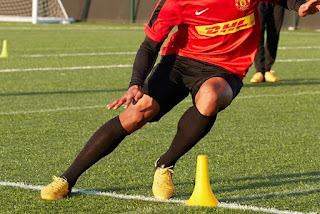
2. Another perk to come early is to catch the Welcome
Dance great kick-start to your Best Day Ever! Be here at 9.50 a.m.
3. Most importantly, Grab a Quack Xpress especially
on peak days (weekends & school/ public holidays). This amazing pass will
let you beat the queue on 20 selected rides and attractions. For example,
Pirate’s Revenge, Vuvuzela, Monsoon 360 and many more.
4. Outside foods are not allowed 🙁 However, there are up to 19 eateries across the park! Baby food or special medical needs are an exception, just bring your supporting documents and all will be fine!
5. I encourage you guys to wear proper swimming attire
to enjoy the pools better. Appropriate swimming attire will help reduce the
risk of contaminating the pool with waterborne illness and contaminants. It is
for your safety too, as non-swimming materials can absorb a lot of water and
can be heavier than swimming attires. Its’s important to stay safe and have
fun!
6. Remember to keep your belongings safe in the storage
lockers available for you. Standard size lockers are RM25 and
luggage size lockers are RM45.There are 4 lockers spots available i.e. Zulu
Walk, Surf Beach, Nickelodeon Lost Lagoon and Fun Fair (Amusement
Park).
7. If you have lost any item, report it to the staff
at Customer Care. They will try their best to help you recover your lost
item.
8. If you ever get hurt (God forbid) while having fun
in the park, they have qualified first aiders to assist you. Kindly
alert the nearest on-duty staff the first aid will be on their way.
9. End your day at Surf Beach to enjoy their shows
and the amazing 8ft wave that splashes everyone in sight for numerous
times starting at 4.30pm!
10. Last but not least, for car drivers, you can Waze
or Google your way here. Ample parking space is available at both Sunway
Pyramid Shopping Mall & Sunway Resort Hotel & Spa.
If you are using the public transport, you can either
use the KTM to Subang Jaya and take a feeder bus to
Sunway Pyramid stop or take the LRT to Kelana Jaya and
take the feeder bus to Sunway Pyramid stop.
Hope this guide has been helpful! Share this blog to a
friend who is coming to Sunway Lagoon.
Have fun and play safe!

































